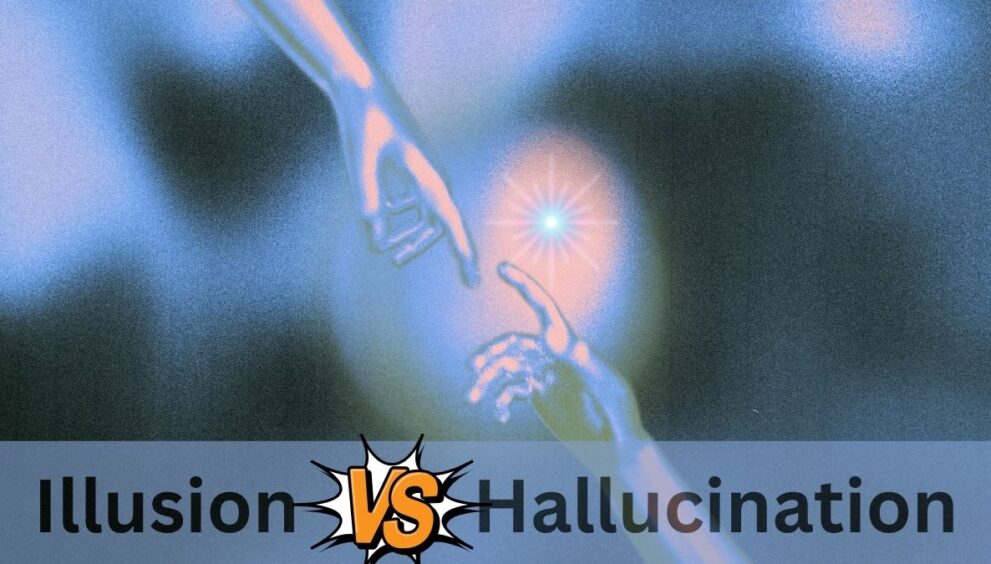Difference Between Illusion and Hallucination

An illusion is when your brain tricks you into seeing, hearing, or feeling something differently than it really is. It’s like when you think a stick in water looks bent, but it’s actually straight. Illusions happen because our brain sometimes misunderstands what our eyes, ears, or other senses tell it.
Illusion Example
Have you ever noticed how the moon looks bigger when it’s close to the ground? That’s an illusion. The moon isn’t actually bigger, but our brain thinks it is because of how we see it next to trees or buildings.
What is Hallucination?
A hallucination is when you see, hear, smell, taste, or feel something that isn’t really there. It’s like imagining so strongly that your brain thinks it’s real. Hallucinations can happen for different reasons, like being very sick or taking certain drugs.
Hallucination Example
Someone having a hallucination might hear a voice talking to them when no one is actually speaking. The sound seems real to them, but it’s just in their mind.
Key Differences Between Illusion and Hallucination
Here are the key differences between illusion and hallucination:
- Source of perception: Illusions stem from misinterpreted real stimuli, while hallucinations arise without any external input.
- Shared experience: Many people can often experience the same illusion, whereas hallucinations are typically unique to the individual.
- Reality basis: Illusions have a foundation in physical reality, albeit distorted, while hallucinations lack any real-world basis.
- Control & predictability: Illusions can often be induced consistently under specific conditions, but hallucinations are generally unpredictable and harder to control.
- Cognitive processing: Illusions involve errors in sensory processing of existing stimuli, whereas hallucinations involve the creation of non-existent sensory experiences.
- Clinical significance: While illusions are usually harmless and common, persistent hallucinations often indicate underlying mental health or neurological issues.
Must Explore:























































































































